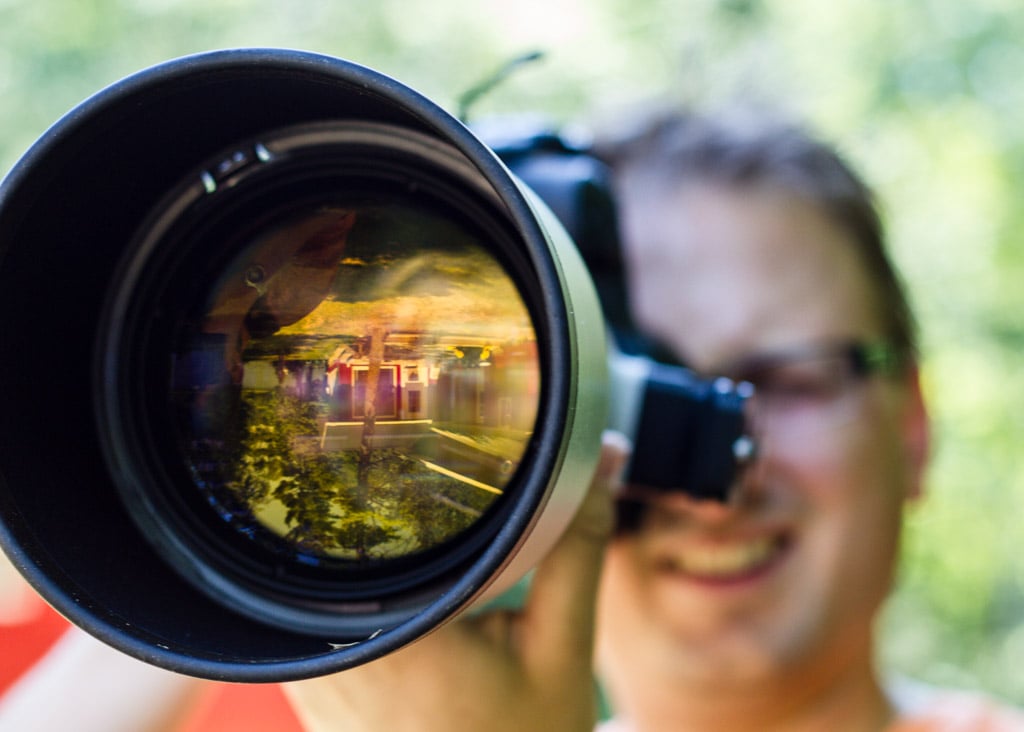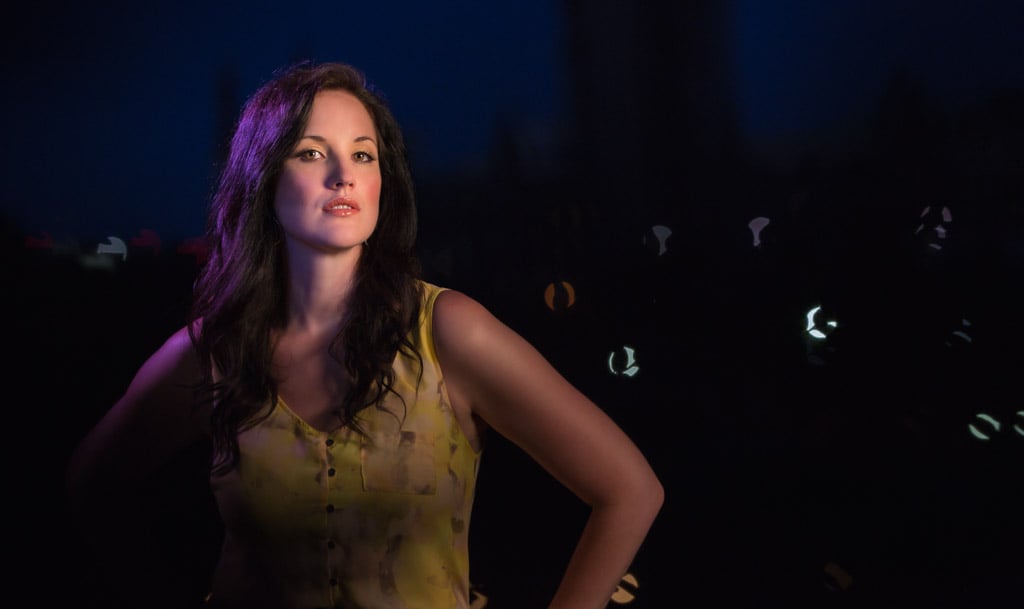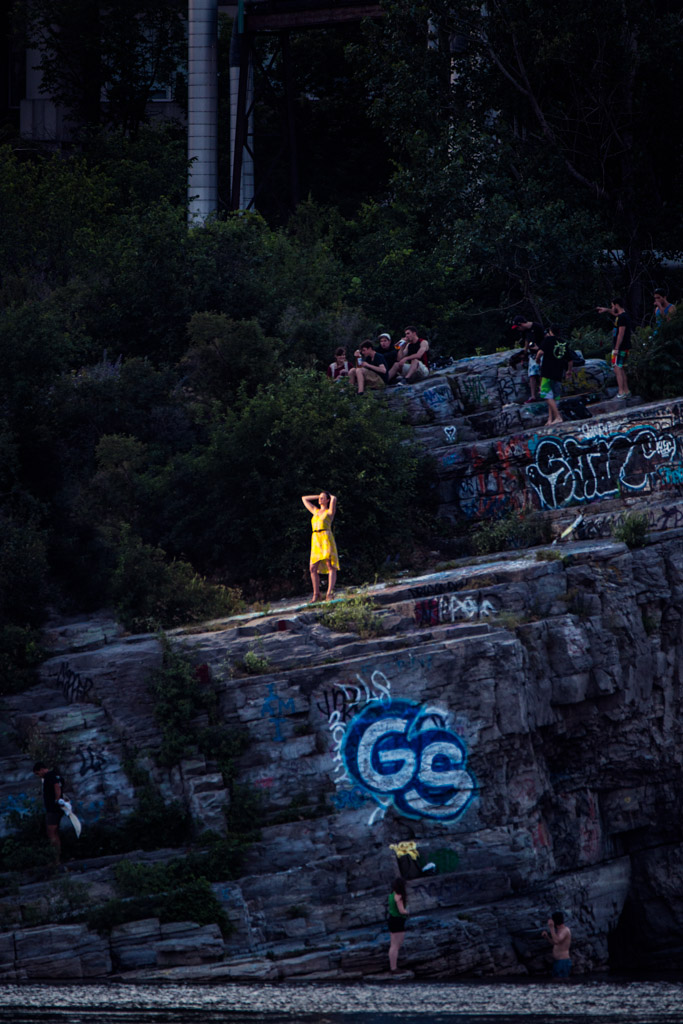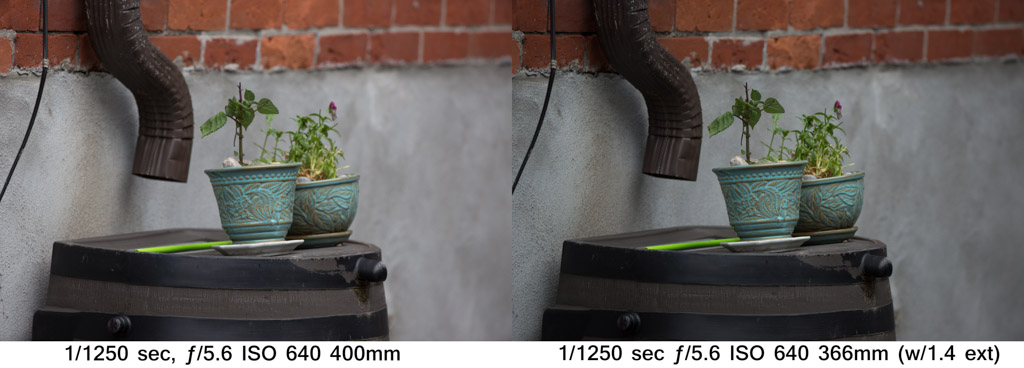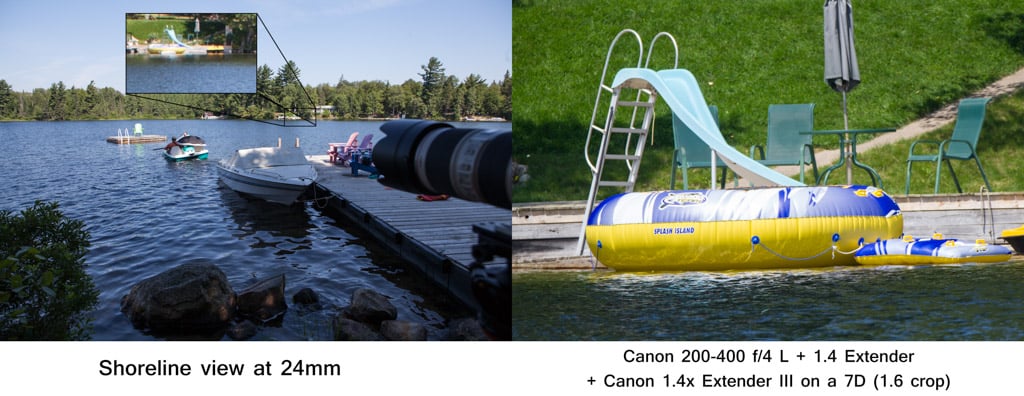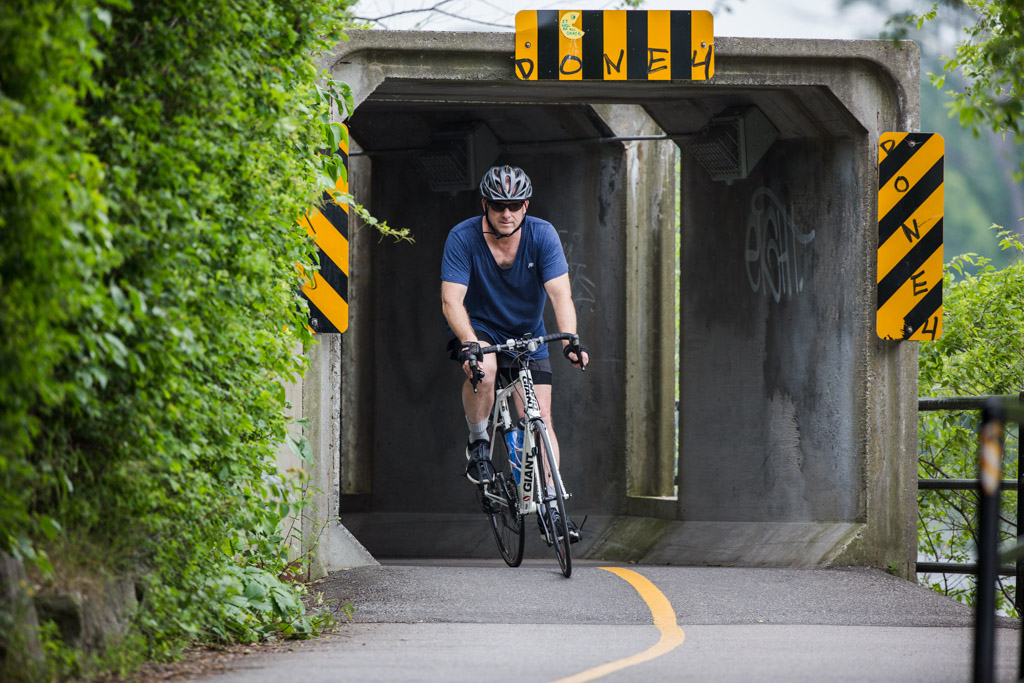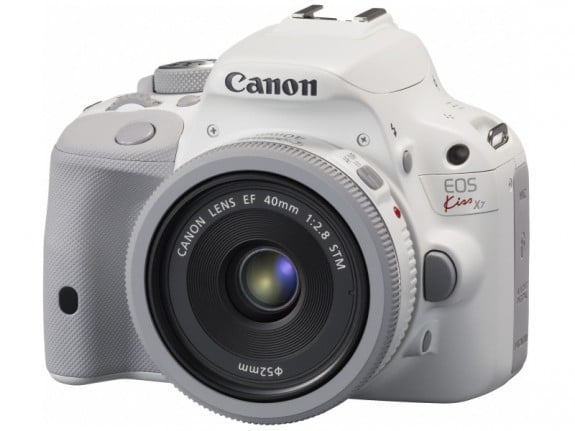The Zeiss 15mm f/2.8 Distagon T* ZE Lens is, arguably, the best
ultra-wide angle landscape lens available and is a great choice for
architecture photography.
This manual-focus-only lens is very sharp from the center fully into the
corners of even full frame sensors.
Operating like a precision instrument, the Zeiss 15 is built to last for
generations.
This lens has become my go-to lens for critical ultra-wide angle
landscape needs.
I have in my hands the third Zeiss 15mm f/2.8 Distagon T* ZE Lens I have
used.
The first two lenses were sent to me for evaluation with a return
required.
The return part became too hard for me and the third one has become a
permanent part of my kit.
Despite the ZE 15's high price and having the full range of Canon
options available to me, the first two Zeiss samples convinced me to buy
my own ZE 15.
It's that good.
The 15mm Focal Length
This lens is not restricted to landscape and architectural uses, but ...
the full frame 15mm focal length is most commonly used for these
purposes.
Here I take you to the reward of a 2,500' (762m) climb – a great view
and a large balanced granite rock on Old Rag Mountain in Shenandoah
National Park.
The top of Old Rag Mountain provides an exceptional view, but the far
away subjects in such views are not necessarily photogenic due to haze
and lack of contrasting and/or interesting details.
This particular mountain is so high above the distant surroundings that
sky and foreground become the primary available subjects.
The clear blue sky was beautiful, but you don't need a lot of it in the
frame.
So, boulders quickly became favored by me.
The Zeiss ZE 15mm Lens allowed me to move in very close to the large
granite boulders, making them large in the frame relative to the other
far more distant objects.
Blue sky extending to a level framing position takes care of
communicating the height.
The Ultra-Wide Angle Composition Challenge
Getting a good 15mm composition is not hard, but composing great 15mm
images can be very challenging.
One such challenge is that this lens is so wide that people can get into
your frame without even knowing it.
I've had even conscientious photographers walk right into my 15mm frame
and setup their tripods without even suspecting that they were now part
of my composition.
But people are not the biggest 15mm composition challenge.
More difficult is finding a scene that provides an attractive background
throughout the wide 110° diagonal angle of view (100° horizontal, 76°
Vertical).
Envision a right angle (such as the corner of your smartphone) placed to
your eye.
The sides of that angle are only delineating 90°, so you'll need to
envision another 5° of view on each side of that angle to realize the ZE
15's 100° horizontal AOV (Angle of View).
Add 10° to each side for the diagonal AOV.
The 15mm lens' 76° vertical AOV is greater than a 24mm lens' 74°
horizontal angle of view.
Backgrounds fulfilling this requirement are in much shorter supply than
narrower AOV backgrounds needed from, for example, a 200mm lens.
Adding to the challenge is that 15mm OOF (Out of Focus) backgrounds are
not magnified in the frame nearly as much as longer focal length OOF
backgrounds are.
Objects in a 15mm background generally remain identifiable even when
wide apertures and short focus distances are used.
Here is an example:
The image above was captured at near MFD (Minimum Focus Distance) with a
wide open f/2.8 aperture for the shallowest DOF (Depth of Field) this
lens can produce.
Shown above is the maximum background blur possible from a 15mm f/2.8
lens, yet the background objects are not hard to identify.
Again, finding a pleasing background for a 110° diagonal AOV can be
challenging.
For great 15mm compositions, you generally want an attractive close
subject to emphasize in a composition that hopefully includes an
at-least-as attractive background.
That close subject will be emphasized in size due to perspective – the
distance from the lens to the close subject will be very short relative
to the background objects.
Notice the size of the little flower relative to the far larger in real
life dog in the background.
And you can keep moving closer to increase that emphasis without
significantly affecting what is in the background and the state of focus
of that background.
Alternatively, skip the complication of panorama capture and stitching
techniques.
If you don't need to print longer or higher than you DSLR has native
resolution for, simply shoot with a wide angle and crop to the aspect
ratio you like.
How about a
Canon EOS 5D Mark III-captured single-frame wide-format image of the Manhattan skyline?
Notice how straight the buildings are in this example?
Shooting level to the horizon is key to this result as converging lines come into play when shooting upward or downward.
Envision the same crop removed from the following sample picture.
The buildings appear to be leaning strongly outward.
If the camera would have been angled downward even more, the buildings
would appear to have an even stronger lean.
If the camera were angled upward with the skyline low in the frame, the
buildings would appear to be leaning inward.
If this effect is not desired in your images, shoot with a level camera
and crop any unwanted foreground and/or background from your images.
Using the converging line principal to your advantage is also possible.
Shooting upward into trees is one common use of this positive use of converging lines.
Because of this same principle, you will want to keep your living
subjects out of the distorting corners of the frame.
They will appear to be stretched toward the frame corners.
And because a close focus distance provides an unflattering perspective
for noses, full body and environmental portraits are the best portrait
use for this lens.
There is, of course, nothing wrong with a 15mm composition that simply
captures a very wide view of the scene in front of you.
And at 15mm, it is not hard to keep the entire frame in sharp focus even
at apertures not too narrow to be strongly effected by diffraction.
A wide AOV is mandatory when shooting in tight spaces.
While 15mm composition is challenging, when the dust settles and you
pull off a great 15mm composition, the results will be worth
celebrating.
These images will likely become your portfolio favorites.
A 15mm lens on an APS-C/1.6x format DSLR delivers an angle of view
similar to a 24mm lens on a full frame body.
And full frame 24mm AOV is an even more-commonly used focal length/AOV
for landscape photography and other more-general purpose uses.
Composing great 24mm images is easier than composing great 15mm images.
If the 15mm focal length works for you, definitely keep reading.
The f/2.8 Max Aperture
The 15mm focal length is going to see significant landscape and architecture photography use including interiors.
I'm sure the grand church interior wedding photo will be one such shot this lens sees use for.
With an f/2.8 aperture, stopping subject motion (such as the wedding party) in low light is a capability this lens has.
Especially since that action will typically cover only a small area of the sensor.
Fast action at frame-filling subject distances might best be avoided for safety reasons.
Remember that the subject is MUCH closer than it appears through the viewfinder.
Better yet, place this lens and a camera on a tripod/stand and fire it using
PocketWizards
or another remote control method to capture starting line, finish line and other action.
Or, capture a close perspective of the bouquet toss at your next wedding.
The minimum shutter speed required for sharp handheld photos is based on
the rate at which a subject is moving across the pixels on the imaging
sensor.
That movement can be subject-caused, or it can be the photographer's
motion (in the form of camera shake).
Because of the wide AOV, subjects quickly become small with distance and
the movement of such covers fewer pixels.
Thus, this lens can often be handheld at relatively low shutter speeds
which means in low light or with narrow apertures.
This review's aperture comparison is brought to you courtesy of the
annual fall destruction of the Carnathan kitchen, AKA cookie production.
The blue apple (I think that is what it is) with little silver balls is
the point of focus.
The full size 5D Mark III images show stronger blur (the blur is
enlarged), but as previously discussed, objects are identifiable
throughout the frame even at f/2.8.
Note that the f/2.8 image is darker due to vignetting – I'll discuss
this below.
Image Quality
One of the most impressive features of the Zeiss 15mm f/2.8 Distagon T*
ZE Lens is the sharpness it delivers.
I can easily say that this is the sharpest rectilinear 15mm prime lens
I've ever used.
Of course, this is probably the only 15mm rectilinear DSLR lens
available to date.
But, I can open this statement up to include all less-than-17mm lenses
I've used with perhaps an exception I'll talk about later in the review.
Even at a wide open f/2.8 aperture, Zeiss 15mm f/2.8 Distagon T* ZE Lens results are sharp.
Extreme full frame corners are good at f/2.8, but become really impressive by f/8.
Stopping down makes little difference in image sharpness within most of the plane of sharp focus.
A much more noticeable effect of stopping down (selecting a narrower
aperture) is decreased vignetting, which noticeably improves the
appearance of sharpness in the corners (moving them to the right in the
tone curve).
With 4.5 stops of vignetting in the corners at f/2.8, you would expect
to see very dark corners when looking at an entire picture.
However, the fall-off pattern is very gradual and the shading is well
disguised.
Comparing an f/2.8 corner to an f/5.6 corner brings the difference to
light.
About 2.5 stops of shading remains at f/4 and approximately 1.6 stops
remains from f/5.6 through f/16.
Use the site's vignetting tool or the aperture comparison to see the
corner shading.
A touch of CA (Chromatic Aberration) is visible in the periphery of the
full frame image circle when areas of strong contrast (white on black
for example) are present.
With an angle of view this wide, it is not hard to get bright lights (including the sun) in the frame.
Fortunately, the ZE 15 resists flare very well.
With the sun in the corner of the frame, some flare effects will be seen, but the amount is relatively mild.
Distortion (barrel or pincushion), is never a desirable trait of a lens, but it is a very common one.
The Zeiss ZE 15 has a small amount of standard barrel distortion (as opposed to wave/mustache distortion).
Though it is a destructive process, this barrel distortion can easily be corrected in software.
None of my ZE 15 images to date have needed correction applied.
Because getting a background blur at stopped down apertures is a
challenge, the quality of that blur is of lower concern with this lens.
But, the blur quality, aided by 9 aperture blades, is there if you can
coax it out.
Here is a full size f/5.6 example using a near MFD focus distance.
OOF specular highlights remain rounded and, though slightly brighter on the perimeter, do not have a harsh edge.
With a wide angle of view and a wide aperture, this is a lens you are
going to want to aim at the night sky.
Most lenses exhibit some coma and stars on a clear night bring this
attribute out perhaps better than any other subject.
Following is a crop from the top right corner of a vertically-oriented
f/2.8 star photo.
The stars in all four corners show a similar stretching (sharp contrast
transitions towards the center, soft contrast transitions outward) to
their particular corner.
The above 5D Mark III-captured ISO 3200 image was not noise-reduced – and happens to contain a meteorite as a bonus.
The center of the frame shot confirms that star trails are not responsible for the stretching effect.
This amount of coma is not unusual and has not prevented me from using this lens for night sky photography.
An interesting image quality note is that my
Canon EF 14mm f/2.8 L II USM Lens
produces images 1/2 to 2/3 stops brighter than the ZE 15 using identical settings under a clear sky.
As an overall package, the image quality that the Zeiss 15mm f/2.8 Distagon T* ZE Lens delivers is top-of-the-line.
Manual Focusing
Like all of the other Zeiss ZE lenses, this is a manual-focus-only lens.
Fortunately, Zeiss makes some of the nicest manual focus systems
available (one of the reasons their lens are commonly selected for
motion picture recording) and the ZE 15 is yet another example of this
excellence.
The full rotation of the manual focus ring is only 55°, but this amount
is quite adequate for very precise focusing.
Infinity focusing comes quickly with a 15mm lens.
The focus ring is very solid and extremely smooth with no play or
wobble.
Rotational resistance required for adjustment is a bit light for my
set-and-forget uses, but it is ideal for active use.
One of my daughter’s pony tail holders stretched over the crease between
the hood and the ring increases the resistance when I desire this.
Infinity focus is, as usual for Zeiss ZE lenses, a hard stop.
I have found that ideal focus on stars (as close to infinity as most of us get) is just slightly shy hard the hard stop,
but the DOF of this lens at narrow apertures and typical shooting distances allows the hard stop to work for quick focusing.
If your focusing needs are not varying much and a narrow aperture is in
use, you can set focus (to the hyperfocal distance) and forget it.
Figure out where your personal focus sweet spot is and remember the
setting for future use (and for visual in-focus confirmation).
For example, I often set the focus distance so that the line is set to a
specific point in the infinity symbol and I know that everything in the
frame will in focus at my favorite landscape aperture, f/11.
A really close subject included in the frame will cause me to veer from
this one-setting-fits-all approach.
The focus ring takes up much of the lens barrel and is where you would
ideally hold the lens when shooting handheld.
This practice can lead to accidental change of the focus distance
setting.
I have found that grasping the lens behind the focus ring with my thumb
and first finger while placing my last finger on the base of the
integral lens hood works well for supporting the lens without touching
the focus ring.
I find manual focusing with today's stock DSLR camera focusing screens
difficult.
But, with the generally deep DOF this lens provides at the distances
this lens is commonly used at, I'm doing OK with manually focusing this
lens.
Fully magnified Live View manual focusing remains my preference for all
manual focus needs.
This lens does not extend and the front element does not rotate with
focusing.
Subjects do not change size as they go into and out of focus, though as
discussed, getting a meaningful background blur requires a short focus
distance.
That subject size does not change with focusing makes focus stacking
techniques more easily accommodated.
As usual, Zeiss provides a detailed DOF scale etched into the lens
barrel and focus distances are etched into the focus ring.
This is not a close-up lens.
Look elsewhere if this is a capability you need.
The 9.8" (250mm) MFD (Minimum Focus Distance) yields a very low 0.11x maximum magnification.
I mounted a
Canon EF 12mm Extension Tube II behind the ZE 15, but the minimum focus distance is so short that the combo is unusable.
You will be able to get a nice perspective on subjects at this lens'
MFD, but again, subject magnification is not a strength of this lens.
Perhaps the
Canon EF 8-15mm f/4 L USM Fisheye Lens would be a better choice for your dramatic perspective needs.
Build Quality & Features
This lens, like all of the other
Zeiss ZE Lenses, has build quality worth raving about.
The precision all-metal construction seems ready to last for generations.
A narrow, grooved, fixed section near the lens mount provides grip for
mounting/unmounting the lens – or for holding the lens without changing
the focus.
The "narrow" descriptor holds more limitation for the latter use.
The also-metal focus ring ribs provide a sure grip on the wider section
of the lens.
The focus ring is the only moving exterior part of this lens – this lens
has no switches and no reason to have a switch.
If the diameter of this lens stopped with the focus ring, it would be a rather compact lens.
However, the lens flares outward significantly to house the large front lens element.
The result is a lens that is comfortable to hold and use, but is wide in the front.
As far as weight is concerned, I can't say that I've ever heard Zeiss
say that saving weight was worth sacrificing any aspect of the ZE lens
quality including strength.
And this rock solid lens ranks in the upper weight class among its
peers.
I need to point out that the measurements above are manufacturer specs
and that our own measurements (that include the entire lens mount)
differ significantly with the Nikon 14-24 and Zeiss 15 lens specs.
We measured the Nikon to be 0.4" (10.2mm) longer than Nikon spec and the
Zeiss measures .41" (10.6mm) shorter than its spec.
While the Nikon weight spec is near our measurement, the Zeiss actually
weighs 2.6 oz (75g) less than the spec we were given.
The reality is that the Zeiss 15 is 8.1 oz (230g) lighter and 0.68"
(17.3mm) shorter than the Nikon.
This discrepancy needed highlighting for the lens comparison images
found later in the review to make sense.
For many more comparisons (with measured results), view the complete
Zeiss 15mm f/2.8 Distagon T* ZE Lens Specifications using the site's Lens Spec tool.
Filters
I need to draw your attention to the filter size column in the table above.
There are a lot of n/a (not applicable) listings there.
And if you remove the APS-C-only lenses, there are only a pair of Canon zoom lenses and a pair of Zeiss prime lenses remaining.
If you are a serious landscape photographer (and many considering the
purchase of this lens are), you probably can't live without a
circular polarizer filter.
Finding a full frame-compatible ultra-wide angle lens that accepts standard threaded filters is a challenge.
There are few prime lenses wider than 20mm that accept such filters.
Ultra-wide angle prime lenses (and a popular zoom lens) are dominated by
convex-objective-lens designs that do not natively accept such filters.
Very large third-party adapters are available for the most popular of
such lenses, but these adapters require inconvenient-to-take-with-you
plate-sized filters (145mm for example)
in addition to the bulk of the special filter holder itself.
The Zeiss 15mm f/2.8 Distagon T* ZE Lens meets the standard filter
compatibility challenge.
The 95mm filters it accepts are not small, but they very manageable.
The 95mm Ultra-Wide Angle Filter Challenge
Selecting the right 95mm filters for the Zeiss 15 requires some attention.
With an ultra-wide angle of view, filter rings can easily interfere with the full frame image circle of this lens.
Physical vignetting is an issue that needs to be addressed.
At review time, my preferred filter brand, B+W, is not offering their
slim XS-PRO circular polarizer filter line in the 95mm thread diameter.
The standard B+W 95mm MRC Circular Polarizer Filter ring depth is 8.3mm (not including threads).
And this depth results in hard vignetting in the corners as seen below.
Even at the narrow f/11 aperture used for the above example, the 8.3mm
filter shows noticeably darkened corners.
You can crop the corners off, but then you lose some of the focal length
you bought this lens for in the first place.
You can try to fix the corners using a clone/stamp or other tool
available to you, but ... this process is sometimes very difficult
(especially with a gradient present in the corner) and in those cases,
time consuming.
The better choice is to use only slim filters.
Your first reaction to a slim filter recommendation is probably concern
about the slip-on lens cap that is typically supplied with them.
That the cap will not stay attached is the concern.
There are no worries here as the ZE 15's lens cap slides right over the
filter (more about this to come).
The top-of-the-line
95mm Heliopan SH-PMC Slim Circular Polarizer Filter
measures 5mm (sans threads) and adds no vignetting.
Please be seated before looking at the price of this fine piece of glass
fitted in a brass ring.
One important factor in my selection of this filter is that pressing the
rotating portion of the ring toward the lens increases friction that
makes filter removable easier.
I'll explain why this is an especially important feature for this lens
in a moment.
The Heliopan had the most neutral color transmission of the high end
filters I tested and that there was no increased flare with
sun-in-the-corner of the frame sealed the deal on this
optically-excellent filter.
Another great slim CPOL filter choice is the The
Marumi 95mm Super DHG Circular Filter.
The actual image quality delivered by this filter is very, very close to
that of the Heliopan and the price is far more palatable.
The aluminum-ringed Marumi delivers image quality including polarizer
effect and flare results very similar to the Heliopan.
Note that the review-time-current
Zeiss 95mm CPOL filter is not slim enough
to avoid vignetting, but you should be hearing about a new slim version this year (2013).
With the Zeiss T* multicoating, I expect this filter to be a great choice.
The Ultra-Wide Angle Circular Polarizer Unevenness
As you can see in the above example, CPOL filters used at 15mm are going
to show unevenness in skies.
You will sometimes want to avoid this use, but I still often prefer
partially-darkened skies for the effect.
I will include examples in the sample pictures for this lens.
Regardless of your taste for unevenly darkened skies, the difference
these filters make in other uses, especially landscape photography,
makes them indispensable.
Here are two comparison examples:
Watch the CPOL filter bring out the rich colors in the moss, water and foliage by cutting the reflections on them.
I should clarify that all of the images in the above comparison were
captured with the CPOL filter in place.
The filter was adjusted to allow most of the reflections to show in the
"Without" example - as would be the similar case if the filter were not
installed.
Otherwise, both images in each comparison were processed identically.
The with-filter improvements appear much more significant in the full
sized images.
The Built In Hood
Like the ultra-wide angle prime lenses with convex front lens elements,
this lens has a built-in lens hood.
The good news is that the hood is always there to block bright light
from hitting the front lens element and to protect the same.
Just that small amount of lens hood protrusion is enough to keep rain
from hitting the front element (or a CPOL filter attached to it) in some
situations (first hand experience) when shooting in horizontal
orientation.
I should note here that this lens is not weather sealed.
And I will also note that water drops or other debris on the front lens
element or filter are quite visible in images captured at this angle of
view.
And removing the effects of these drops from images rivals removing
flare – it can be a very difficult process.
Yes, it accepts filters, but ... don't get one stuck!
While the most-recessed portions of the lens hood provide near hood-less
ease of filter adjustment access, the non-recessed portions of the hood
make it extremely difficult to remove stuck filters.
You cannot get a filter wrench around the filter.
Be aware of this before your over tighten your filter on this lens.
I have a general over-tightening problem, and a stuck filter was a
dilemma for me.
And I am thankful that the Heliopan filter I selected could be removed
by pressing toward the lens while twisting.
Installing and uninstalling these very-large-sized filters takes a bit
of time since the available filter opening restricts you to short turns
of the filter.
As always, use care when installing and removing filters as filter
threads can scratch a front lens element if misdirected.
The Lens Cap
When a lens has a built-in lens hood, that lens usually has a lens cap
that wraps around that hood.
So it is no surprise that the Zeiss 15 gets a metal slip-on lens cap.
This cap style tends to be problematic in that it does not remain in
place very well, but the quality metal ZE 15 cap has been working nicely
for me.
A thin layer of padding material protects the lens hood from the cap and
adds the right amount of friction to hold the cap in place.
A nice feature is that the cap slides over the top of any filter you
have installed.
Here it is:
You are on your own to find a case for the Zeiss ZE 15 as none is included in the box.
Let's take a visual look at some competing lenses.
Positioned above from left to right in their fully retracted positions are the following lenses:
Zeiss 18mm f/3.5 Distagon T* ZE Lens
Canon EF 14mm f/2.8 L II USM Lens
Canon TS-E 17mm f/4 L Tilt-Shift Lens
Zeiss 15mm f/2.8 Distagon T* ZE Lens
Canon EF 16-35mm f/2.8 L II USM Lens
Nikon 14-24mm f/2.8G AF-S Lens
The same lenses are shown below in their fully extended states with their lens hoods in place.
No, your eyes are not failing you.
Only the Canon 16-35 L II and Zeiss 18 have removable lens hoods.
As I transition this review to a look at the models that compete most
with the Zeiss ZE 15, I want to share a focal length comparison.
At 400mm, no one would care about the difference 1mm makes as the
relative change is tiny.
However, the difference each mm of focal length change makes at
ultra-wide angles is very noticeable.
The Ultra-Wide Angle Landscape Lens Dilemma
I am on a continuous quest for the ultimate landscape lenses, but
contend that the perfect ultra-wide angle landscape lens does not yet
exist.
There are shortcomings to every choice.
Let me talk about some of the contenders.
Canon EF 14mm f/2.8 L II USM Lens
First up is Canon's widest rectilinear prime lens, the 14 L II.
The modestly lighter and more compact Canon 14 L II is an excellent lens
with image quality rivaling the Zeiss ZE 15.
When stopped down, these two lenses deliver similar image sharpness.
The 14 L II trails the Zeiss 15 slightly in corner sharpness, flare and
slightly in bokeh (6 blades vs 9).
The Canon has slightly more CA, but it has slightly less distortion,
less vignetting, a wider focal length and AF to its advantage.
The Canon is weather sealed though the front element is not be
completely sealed.
A filter is required for complete weather sealing, but the Canon does
not accept standard threaded filters.
Inability to accept threaded filters without a large aftermarket
adapter, in my opinion, is the Canon 14 L II's major fault for landscape
use.
Canon TS-E 17mm f/4 L Tilt-Shift Lens
Canon's next narrower focal length prime lens is the TS-E 17 L.
This is another lens that delivers very impressive image quality.
The TS-E 17 has only an f/4 max aperture, but from f/5.6 and narrower,
it at least matches the Zeiss 15 in sharpness.
The TS-E 17 L and Zeiss 15 have a similar size & weight and the two
lenses share manual focus characteristics.
The TS-E 17 has less vignetting, has no distortion and has tilt/shift
movement capabilities to its advantage.
The 17mm focal length is not as wide as the 15mm focal length, but the
convex front lens element that is unable to accept standard threaded
filters (or even a lens hood) is the Canon's biggest shortcoming for
landscape use.
Other Canon Prime Lenses
Canon's next narrower prime lens is 24mm.
While all 3 of Canon's 24mm lenses are superb, that focal length moves these lenses into a different category.
Canon EF 16-35mm f/2.8 L II USM Lens/
Canon EF 17-40mm f/4.0 L USM Lens
Canon makes a pair of excellent full frame zoom lenses that include 16mm
and 17mm wide angles with threaded filter compatibility.
The zoom lenses offer a big advantage of having a range of focal lengths
instantly available along with autofocus.
Both zooms deliver remarkably sharp image quality, but the Zeiss is
sharper than either – especially at wider apertures and in full frame
corners.
A big downside is that the zoom lenses have strong barrel distortion at
their widest focal lengths.
It will not be hard to see a flat horizon bow outward at the edge of the
16/17mm frame.
The Canon zooms are lighter and have weather sealing to their advantage.
The 16-35 L II is a lens I frequently use – it remains a standard in my
kit.
Zeiss 18mm f/3.5 Distagon T* ZE Lens
The ZE 15mm lens is the widest Canon/Nikon mount lens Zeiss makes.
The next-longer Zeiss lens is 18mm, which also happens to be the second widest prime lens that accepts standard front filters.
The 18 is smaller and lighter than the 15 and also delivers very good image sharpness.
The 15 shows less flare and less CA.
The 18 exhibits wave/mustache distortion and 18mm is, of course, not nearly as wide as 15mm.
Nikon 14-24mm f/2.8G AF-S Lens
Earlier in the review, I mentioned a lens that rivals the ZE 15 for
sharpness at 15mm and the Nikon 14-24 is that lens.
The Nikon 14-24mm f/2.8 is a highly-loved lens, primarily due to the
image sharpness it delivers.
It is so-loved that many have used an adaptor to make this lens usable
on Canon DSLR cameras.
I personally find the very strong barrel distortion this lens delivers
at wider angles to be unsavory for many uses.
Yes, you can correct the distortion, but this process is destructive to
image quality and may result in less angle of view than the image
started with.
Zooming to a longer focal length results in lower distortion results
from the 14-24, but distortion does not equal the Zeiss 15 until about
18mm.
Again, the Nikon 14-24mm will rival the Zeiss in sharpness at 15mm and
has a range of focal lengths and AF to its advantage.
The Nikon has stronger CA and is larger/heavier than the Zeiss 15.
Once again, with its convex objective lens, this lens does not support
standard threaded filters without a large aftermarket adapter.
APS-C Format Options
APS-C format DSLR camera owners have
many more options for getting to 15mm or wider than full frame owners.
But, the ZE arguably delivers better image quality than all of them.
The Price
In the above comparisons, I did not mention price.
Unfortunately, price is going to be the biggest limitation to this lens'
popularity.
The Zeiss 15mm f/2.8 Distagon T* ZE Lens is the most expensive
ultra-wide angle lens I've used, but obviously (since I now own one), I
think it is the best-available ultra-wide angle landscape lens, and that
it is worth the price.
Serious bird and wildlife photographers pay far more for their big
lenses, and you are not likely any less concerned about image quality
than they are.
The price is justifiable, but being realistic, affordability will be the
bigger hurdle for many.
It is the Best
As I just said, I regard the Zeiss 15mm f/2.8 Distagon T* ZE Lens as the
best-available ultra-wide angle landscape lens available.
This lens is also an excellent choice for architecture and other
confined-space photography.
The Zeiss 15mm f/2.8 Distagon T* ZE Lens offers very impressive build
quality and excellent prime lens image quality in a made-for-landscape
and architecture focal length.
http://www.the-digital-picture.com


